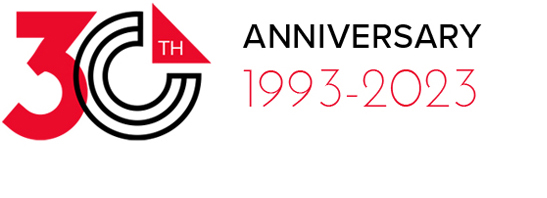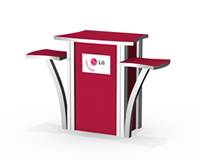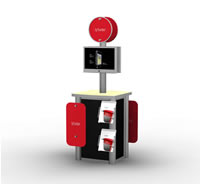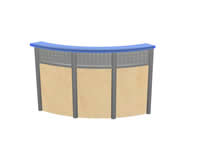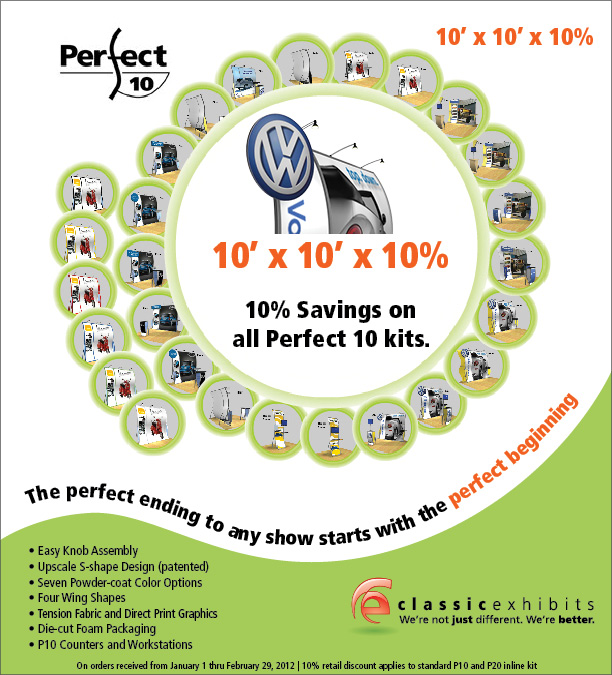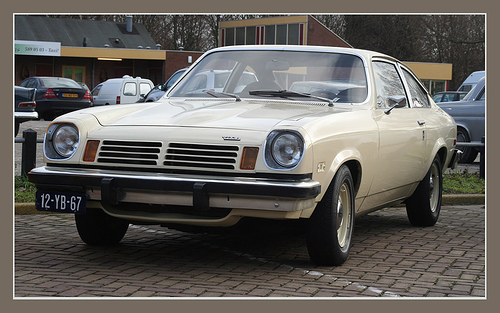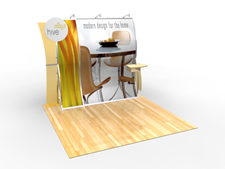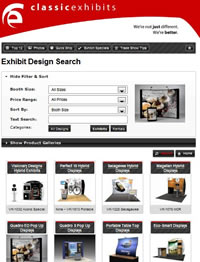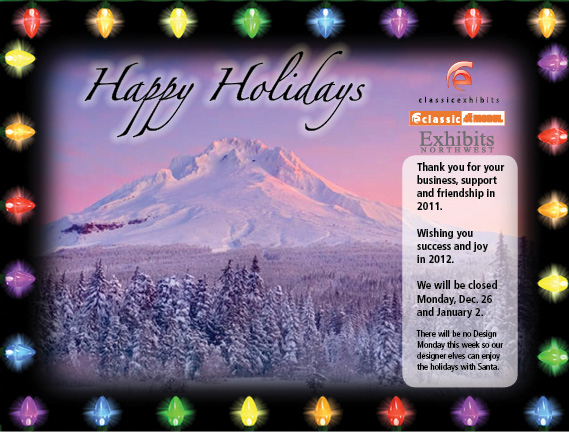The Debacle
Do you remember last year’s trade show debacle? The booth staff complained about the lack of storage. The marketing manager wondered where and how to demo your company’s product. Especially embarrassing was the aimless wandering of potential clients.
This year is different. You included, at the suggestion of your exhibit designer, pedestals, workstations and a reception area. These are the unsung workhorses of any exhibit, easy to overlook during planning, but always missed during a show. And, like nearly every teenage romantic comedy, what seems practical and unexciting at first transforms into a something smart and endearing at the end.
Pedestals
Let’s make this easy. Picture the pedestal as the cup holder of your exhibit. There’s a reason modern cars have multiple cup holders. They’re necessary and convenient, not just for the driver, but for every other person in the vehicle. Even modest pedestals increase your storage capabilities by cubic feet. Never again will Barbara or Bill complain that there is no place for her purse or his European carryall (aka man purse). Plus, the front of the pedestal will serve as valuable graphic real estate for your brand.
Pedestals in an inline booth, such as a 10×10 or a 10×20, do triple duty. First, they offer locking storage. Secondly, the right pedestal delivers additional branding space. Lastly, whether in a 10×10 or a longer inline, a pedestal provides a focal point for your booth staff and client to meet, chat, and then explore opportunities.
Pedestals can be basic, like the LTE-1001 with a shelf and open storage, or more elaborate such as a MOD-1176 with multiple counter tops and locking storage. The key is to find the design that matches your exhibit marketing goals and budget.
Workstations/Kiosks
Workstations have become indispensable to any display. For many of us, we wonder how we conducted business on the show floor before there were monitors, tablets, or the Internet. It’s where your booth staff ultimately rocks your bottom line. The workstation allows you to showcase your product, whether you’re dealing in widgets or software. This is where your staff, client, and product meet and the demonstration begins.
Consider your workstation carefully. Will the workstation be a conversation center highlighting your product? Or, does it need to be constructed so your staff can conduct a semi-private conversation with your potential client? Graphics, A.V., and lighting can enhance your workstations.
The perfect workstation can be both a practical and an aesthetic addition to your exhibit. Workstations can be simple and straightforward such as a MOD-1177 or double-sided with literature holders and storage such as MOD-1227. As monitors have gotten larger, workstations have evolved to accommodate them. It’s not uncommon for freestanding workstations to hold up to 42” monitors, with even larger monitors on the backwall.
Reception Counters
Even in a well-designed island booth, clients can get lost on that larger stage. That’s where a reception counter comes in handy. The reception counter serves as a guide or central location for exhibit attendees, much like a receptionist counter in an office. At a minimum, this is where attendees get acquainted with your product or service, grab a piece of candy, or simply rest their feet for a few minutes on the padded carpeting.
The card reader typically is stationed at the reception counter. There’s more counter top space than with a pedestal and typically multiple locking doors and shelves for storage. All that storage makes it the ideal location for brochures, catalogs, or giveaways such as promotional pens, flashlights, or calculators. If the staff is engaged with other clients, the “receptionist” can provide general information until someone is available.
Reception counters can also provide another graphic opportunity generally much larger in area than the pedestals and workstations. And, unlike many pedestals or workstations, reception counters can be either modular or custom. It all depends on your visual requirements. Some examples include the modular LTK-1134 with storage and a monitor insert option or the MOD-1143 with a privacy shelf, storage, and graphic insert panels.
All that careful planning means you can breathe easier this year. You’ve signed the purchase order, chosen the appropriate pedestals, workstations, and counters, and your new exhibit will be built and delivered with plenty of time. You are trade show ready and trade show smarter. Good luck!
Mike Swartout, Design Director
Classic Exhibits Inc.
http://www.linkedin.com/pub/mike-swartout/8/7b7/246
*********************************
Based in Portland, Oregon, Classic Exhibits Inc. designs and manufacturers portable, modular, and custom-hybrid exhibit solutions. Classic Exhibits products are represented by an extensive distributor network in North America and in select International markets. For more information, contact us at 866-652-2100 or www.classicexhibits.com.


